“Ultimate” Perfection within the Baseball Experience Will Be Attained only after the Following Imperfect Conditions Have Been Rectified or Enhanced:
- The D.H. has to be established in Both Leagues.
- The “Bean-Ball” must be eliminated, not justified.
- Umpires’ outside-inside corner discrepancy on wide breaking curve-ball must be resolved.
- Mandatory umpire assistance on Checked-swings.
- Establishment of a 2-bagged 1st Base (like Softball)
- 2nd & 3rd Basemen tap the “front” side of base to determine a “tag-out” (for fielder protection).
- Establishment of a D. R. (Designated Runner).
- Batters should get 2 strikes and 4 balls.
- No “intentional walk”. If at least 1 strike is not thrown to a batter, after four pitches he goes to 2nd. Base.
- A “D. R.” (Designated Runner) can also Pinch-Hit in the same game.
1.
The Pitcher is the hardest worker on the field! Let him focus on his primary job by letting him rest when his turn to bat comes up. The D.H. was the first solid attempt by Baseball to get rid of any superficial or perfunctory aspects of a game whose otherwise proud and purposeful intent was being undermined. The National League “Dinosaurs” continue to insist that the D.H. removes a distinct strategy that is integral to the Sport’s identity. All it does is remove a “little-skilled” or “no-skilled” hitter for a competent one, thus allowing for more competency where it is appreciated by all observers of the game.
A pitcher (now-a-days) can’t even bunt properly, and stands a good chance of smashing a finger, or two. Why run the risk? Ask Kevin Brown if he would rather have had someone batting for him when he smashed his fingers and couldn’t pitch for a good while. Or A. J. Burnett whose right eye might have given solid testimony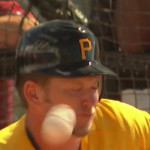 , and any of the others who have pulled hamstrings while running bases, when they could have been resting comfortably while mentally preparing to pitch the next inning? It doesn’t take an Einstein to figure out the logical and rationally sound alternative to a pitcher batting. And other incidents including Giants’ Ryan Vogelsong breaking his hand while swinging at a pitched ball, and “relief” pitcher (Santiago Casillas
, and any of the others who have pulled hamstrings while running bases, when they could have been resting comfortably while mentally preparing to pitch the next inning? It doesn’t take an Einstein to figure out the logical and rationally sound alternative to a pitcher batting. And other incidents including Giants’ Ryan Vogelsong breaking his hand while swinging at a pitched ball, and “relief” pitcher (Santiago Casillas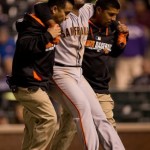 ) pulling a hamstring legging an infield out, thoroughly exacerbates an intelligent person’s perspective on what is meaningful in Baseball. Is it going to take a serious injury to Clayton Kershaw and Zack Greinke, or Stephen Strassberg, or their likes (Adam Wainwright for another) to finally come to the ultimately intelligent conclusion? I know that Kershaw, Strassberg, Greinke, Wainwright, and a few others think they have “batting prowess”, but their pitching is much more highly needed, without the risk of unnecessary injury.
) pulling a hamstring legging an infield out, thoroughly exacerbates an intelligent person’s perspective on what is meaningful in Baseball. Is it going to take a serious injury to Clayton Kershaw and Zack Greinke, or Stephen Strassberg, or their likes (Adam Wainwright for another) to finally come to the ultimately intelligent conclusion? I know that Kershaw, Strassberg, Greinke, Wainwright, and a few others think they have “batting prowess”, but their pitching is much more highly needed, without the risk of unnecessary injury.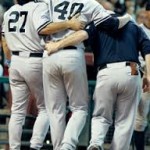
The extension of a “Great” hitter’s career as a D.H. is another reason for admiring the American League initiative. Babe Ruth hit three home runs in his final game, before he was virtually forced into retirement.  Just think of what it would have done for the fan-base as well as the extension of personal, individual worth to such Hall- of- Famers like Ruth, Jimmy Fox, Ted Williams, Yogi Berra, and many others, to be able to continue their careers even while subjected to a somewhat limited fielding capacity, but still highly productive offensively. The whole process only improves the quality of team performance, and adds continually to the appreciative adulation of fans. Everyone benefits by innovation, even the stagnant thinker, once he accepts the inevitable aspects of positive change. If not mandatory, it should at least be optional for every team’s manager to decide!
Just think of what it would have done for the fan-base as well as the extension of personal, individual worth to such Hall- of- Famers like Ruth, Jimmy Fox, Ted Williams, Yogi Berra, and many others, to be able to continue their careers even while subjected to a somewhat limited fielding capacity, but still highly productive offensively. The whole process only improves the quality of team performance, and adds continually to the appreciative adulation of fans. Everyone benefits by innovation, even the stagnant thinker, once he accepts the inevitable aspects of positive change. If not mandatory, it should at least be optional for every team’s manager to decide!
2.
Does Major-League Baseball truly want to stop the violent behavior that occurs almost always after a batter has been hit by a speedily pitched ball, or is IT merely giving “lip-service” to attempt to placate those fans who are repulsed by that barbaric tendency of most pitchers to stoically disregard the “well-being” and possible “livelihoods” of players whose healthy bodies are a requirement to continue in the game they (also) love to play (effectively)? There never was a good excuse to tolerate the abuse, and now there is absolutely no excuse for not obliterating its use in Major League Baseball.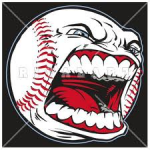
Do you get the picture of, “Bludgeoning Effect” of a 90-100 MPH 5 ounce, hard, round projectile? 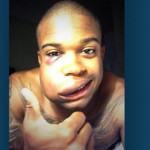
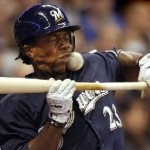
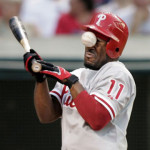
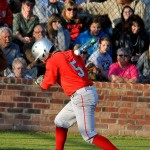
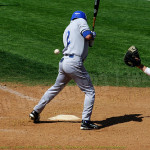
The only practical RULE that will either eliminate, or at least diminish the hideous tendency to deliberately or “accidentally” hit a batter with a “Fast-ball” or “Hard Slider” or “Cutter”, is one that will award the batter 2 bases (not one), allowing him to pass First Base and go directly to Second Base, and putting him, or any previous base-runners, immediately in scoring position. If such pitched ball strikes a batter on a part of his body that is protected by “armor” of some sort (except helmet) then he is awarded one base. The umpire’s discretion would govern all aspects of the Rule.
Although Bud Selig did an admirable job as Baseball Commissioner, his most blatant omission or dereliction of duty was in not conceiving and enforcing this rule before he left office. His successor must (and will) do the “right thing”. 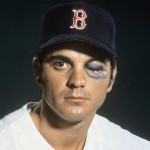 Will this guy ever play again? And will this guy
Will this guy ever play again? And will this guy 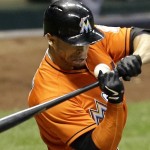 ever fully recover, to fulfill his potential ?
ever fully recover, to fulfill his potential ?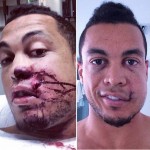 If Theo would like to see Batters’ proficiency improve, then lessen the fear-factor that is inadvertently produced by the prospect of their being bludgeoned and “Disabled”!
If Theo would like to see Batters’ proficiency improve, then lessen the fear-factor that is inadvertently produced by the prospect of their being bludgeoned and “Disabled”!
3.
Not a day goes by, where I am watching a game on the MLB Station, that I see the circumstances of a critical situation, as well as a player’s batting average, affected by the miscalculated judgment of the “home-plate” umpire with regard to a sweeping curve-ball over the outside or inside corner. I admit that in most situations, the umpires are uncannily accurate in their judgments on the bases. But for some unknown reason, they have not been tutored correctly on judgments regarding the action of the curve-ball as it moves around or across the outside or inside edge of “Home-Plate.”
When a right–handed batter is facing a left-handed pitcher (or vise-versa), and a sweeping curve-ball is caught a foot (or more) behind the plate, in the right-center of the plate, then the pitch is probably a strike. But if that curve is caught by the catcher off the right corner of the plate, it should be rightly judged as a ball, since it must have gone around the outside edge to be caught right on the corner, a foot behind the plate. But every day, I see an irate batter mumbling his way back to the dugout, silently or audibly cussing the umpire’s erroneous decision. Many times the game is dramatically affected by the call, inning ending with 3 men stranded, plus batter and manager being ejected for justifiably arguing the call.
But conversely to the previous example that negatively affects the batter is the circumstance that negatively affects the Pitcher. The same “lefty” may throw his sweeping curve that begins beyond the outside edge of the plate, but sweeps across the plate, and the catcher receives it a foot beyond and behind the home-plate. The umpire almost always calls that pitch a ball. But, in fact, it almost certainly “catches” some part of the plate, and should be ruled a strike. I admit that in order to call those two types of pitches accurately on a consistent basis would take more than mortal human skills. No umpire should have to be culpable for not accurately judging those pitches. That is why, eventually, MLB will install an electronic mechanism to make that judgment for the umpires (like It did with “Instant-Replay”).
It is unfair to the batter and pitcher, as well as the umpires and Major-League- Baseball, to have to endure traumatic and consequential effects of the poor-judgment that have been traditionally endured before this modern technological age arrived. If MLB has not yet thought of creating a “Home-Plate” that could be electronically implemented for practical use at all Big League Stadiums, then I would at least hope that some thoughtful executive would devise a prototypical model with which umpires could practice during the “interim,” so they could see first-hand that they are indeed missing those pitches, and attempt to solve the current problem by trial and error (for the time-being). I predict that, when that time comes, pitchers who previously received little or no notoriety will suddenly become “high-priced” Mounds-men, because that pitch will be found virtually impossible to hit.
4.
I’m sure that soon there will be a rule making “mandatory” that the Home-Plate Umpire be required to ask for assistance on all “check-swings” that occur in a baseball game. There is no reason not to have such a rule. No umpire, no matter how astute and highly skilled he is, can consistently discern whether the baseball thrown is a ball or strike, and still detect if the batter took an abbreviated swing at the pitch.
5.
With all the mishaps or arguments that occur around the First-Base bag, it would be appropriate that Major-League-Baseball take the initiative of installing a “double-base” First Base “safety” bag 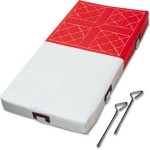 to diminish the prospect of both injuries and disputes. The dispute that occurs most often has to do with a runner from Home to First who is running up the First Base line after striking out or bunting.
to diminish the prospect of both injuries and disputes. The dispute that occurs most often has to do with a runner from Home to First who is running up the First Base line after striking out or bunting.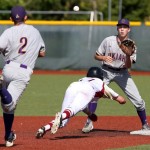
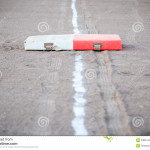
The catcher or pitcher fielding the ball is sometimes in a direct line with the runner while throwing to First. Technically, this should not be a problem because the Baseball rule states that the runner must run on the outside of the base-line. IF the fielder hits a runner, who is on the inside of the base-line, with the thrown ball, the runner is supposed to be called out. But the umpire’s discretionary judgment naturally senses that the runner, after having hit the ball (or struck out), is simply taking a path most directly toward First Base.
So, in most cases, if the runner is only slightly on or over the line in question, the umpire will not call him out if he is hit by the ball. To an observer, it would be unwarranted to call him out because, in most cases, the runner would sometimes have to abruptly deviate from running in a straight line to the bag, since, when he begins his trek to First Base, he is generally 2 or 3 feet inside the base-line. Also, for a runner to deliberately attempt to run outside the base-line, he would inadvertently put himself in a vulnerable position when reaching First Base, if the foot extending to touch the base was his right. It would have to cross over his body, thus the awkward angle of his leg with relationship to the bag would easily subject him to a possible twisting of his ankle (or worse).
Therefore, the utilization of the “double-bagged” First Base would not only make it easier for the umpires to enforce the rule of running outside the base-line, but the diminishing of the injury factor in most situations would be greatly enhanced. The runner’s target would no longer be the singular entity on the inside of the baseline, but would now be the “colored” object of attention on the outside of the base-line. Thus the proximity of runner to fielder would be less acute. For the runner to be safe, while running from Home to First (to beat out an infield hit), he must touch the “colored” portion of the base on the outside of the baseline.  If he steps on the white portion, without any part of his cleat touching the “colored” portion, it would be as if he had missed the base completely, and would be considered out (if fielder had touched the white base while in possession of the ball). If a batter hits the ball to the outfield, and has a chance for extra bases, he does not have to touch the “colored” base, but proceed in the traditional manner of “rounding” the “white” base.
If he steps on the white portion, without any part of his cleat touching the “colored” portion, it would be as if he had missed the base completely, and would be considered out (if fielder had touched the white base while in possession of the ball). If a batter hits the ball to the outfield, and has a chance for extra bases, he does not have to touch the “colored” base, but proceed in the traditional manner of “rounding” the “white” base.
The injuries that would most likely be avoided are those that would put the runner and First Baseman in close proximity to each other on close plays, especially on errant throws. Even when the First Baseman makes an easy catch of a high throw that keeps his body close to the bag, many runners (especially those with wide shoulders) have tripped while crossing the base with even slight contact with some part of the fielder.
The latest “serious” injury, that occurred to Zack Cozart of the Cincinnati Reds (and Bryce Harper), probably would have been avoided if he had more room to negotiate the base he desperately tried to secure. Many of the injuries I have observed occurred because at the last moment, it was impossible for either, or both, player(s) (First Baseman/Pitcher and Runner) to avoid each other due to the fact they were all vying for the same “singular” bag. The only practical Solution to the entire matter of the “First Base Dilemma” is the “double-bagged” First Base “Safety-Bag”. And the “Safety-Bag”(colored portion) should be made of a slightly softer material so the runner’s cleat would not slip off a hard top-surface, as in the Cozart (or Harper) debacle.
DOES ANYTHING MORE NEED TO BE SAID?
Coming Soon: The Last 5 Proposals for Baseball Perfection